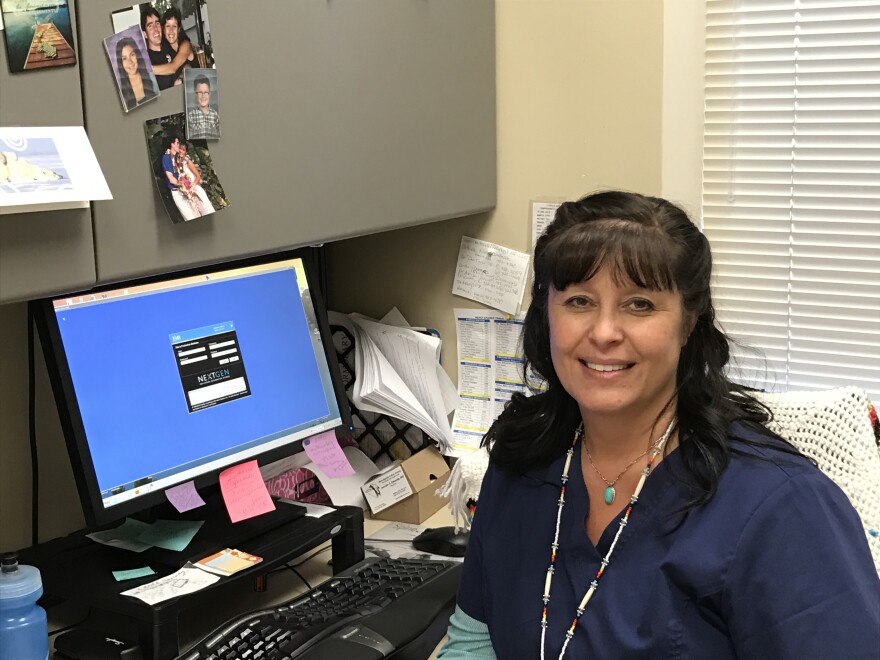In the class of 2015, more than 18 thousand graduated from medical schools across the U.S., but only 20 were American Indian or Alaskan Native. And at the Reno-Sparks Tribal Health Center, there’s only one Native doctor. Reno Public Radio’s Anh Gray explores why this lack of diversity exists.
The 2016 graduating class of the University of Nevada, Reno School of Medicine celebrated wrapping up years of hard work. But none of those graduates were Native Americans.
Last year there were 279 students enrolled at UNR’s med school, but only two identified as being American Indian or Alaskan Native.
Dr. Melissa Piasecki is the Executive Associate Dean. She says there are several reasons why more Native Americans aren’t graduating.
“In terms of student enrollment,” Piasecki explains, “the students in the pipeline tend to be a big determinant of who ends up in the actual application pool.”
The number of Native American students in the application pool is very low. For example, Piasecki says, the med school had only 10 Natives applying for the school’s graduating class of 2020.
Piasecki says to boost the number of Native applicants, educational achievement must start early.
“It’s really around middle school and high school where students who are interested in medicine, start to have opportunities,” Piasecki says, “to really excel in some of the math and science courses to start a path of achievement in high school, which then prepares them to be successful pre-med students.”
The National Center for Education Statistics reports that U.S. high school graduation rates for the 2014-2015 school year reached a historic high at about 83 percent. For American Indians/Alaska Natives the rate was about 72 percent. That’s the lowest rate for any ethnic group in the country.
Someone who beat the odds is Dr. Jennifer Edwards. She’s an Alaskan Native from Sitka, Alaska. She’s a primary care doctor at the Reno-Sparks Tribal Health Center.
“They incorporate culture in terms of artwork, and what the building looks like,” Edwards says, “and I know that sometimes they do certain ceremonies.”
The center is located in Reno on the nearly 30-acre Indian colony, which has more than one thousand members from the region’s three tribes: Paiute, Shoshone and Washoe.
Edwards is one of the three full-time permanent physicians at the facility. And even though she’s the only Native doctor there, that’s not unusual for patients.
“I think most Native people don’t have any experience with Native physicians because there are so few,” Edwards explains, “so they don’t have that expectation at all.”
Growing up, Edwards didn’t have any personal experience with a Native doctor. She recalls being a good student because education was valued in her family. Her dad and step-mom were both teachers. She attended college at Stanford University. After graduating, she worked at an Indian health care facility in Alaska. It was during this time that she began to mull over a career in medicine.
Now Edwards considers one of her roles is as a mentor to young people in the community. She recognizes the obstacles that some of them face.

“I think there is a big shortage of Native students finishing high school, and even the ones that go to high school, going to college, and finishing college, and a lot of it is if nobody in their family has gone, or very few,” Edwards explains why some students end up not going further in education. “Financial hurdles certainly. I think that they just don’t see very many and unless they’re around a group or have people mentoring them, they just don’t get there.”
Spokeswoman of the Reno-Sparks Indian colony Stacey Montooth says having more doctors who share the same culture can be critical to patient care. She says Native doctors have built-in cultural insights into problems afflicting their own people. For example, the diabetes epidemic has hit the Native population hard.
“Our people have this huge issue with diabetes. I think that people who grow up in our community, who know, who have aunties, and parents and uncles who’ve suffered from diabetes, it’s almost common knowledge to them even before they go off to medical school,” Montooth says, “they know about the ailments and they can identify with the overall social ills that plague our people.”
Montooth says she’s also a patient of the facility. For her, she likes being able to see a Native doctor.
“As a Native American woman, I'm just more comfortable with people who look like me," Montooth explains.
According to a report from the American Association of Medical Colleges, health disparities exist among different populations in the U.S. Minorities usually have more limited access to health care than their white counterparts. The association advocates for more diversity in the workforce as one way to improve quality of care and patient outcomes.









